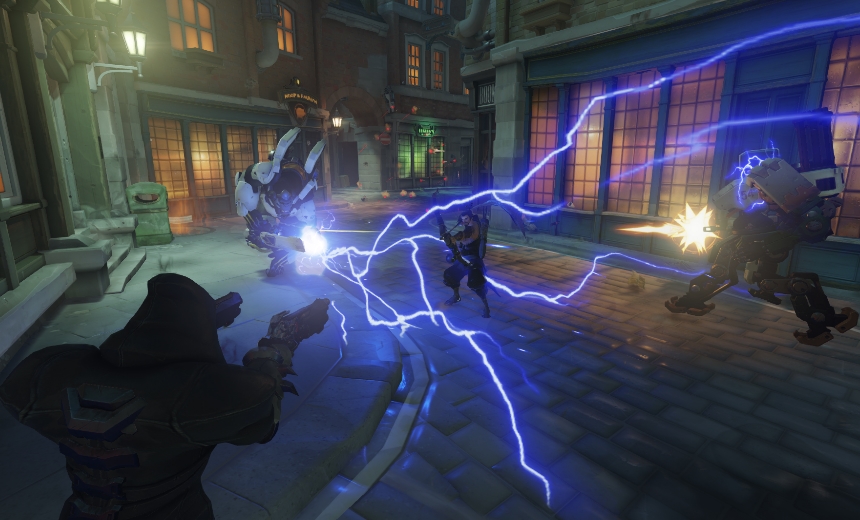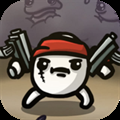
The Story So Far
Since tournament organization began late last year, the competitive community has stuck with the “Stopwatch” game mode – a community-implemented, unofficial mode. In Stopwatch, each team plays once as either side on Payload maps, with the winner decided by the fastest checkpoint capture or map completion time, depending on how far each team gets. Stopwatch is also used on Capture Point maps, but they are disliked by the community due to perceived imbalance, and rarely feature.
This has, however, created point of contention for some casual viewers, as often in the second round of a Stopwatch match, players abruptly “give up” before the map is completed, which can cause confusion, as well as being a bit anti-climactic.
Blizzard, likewise, has seemingly rejected Stopwatch. Their implementation of a “competitive” game mode completely ignores anything to do with time, or even checkpoint captures, only concerning itself with whether or not the map has been completed. If you finish the map in 3 minutes or 15, it’s all considered equal.
In the event that both teams complete the map, the game is then decided with a tiebreaker, which is a single round of King of the Hill. King of the Hill is not the most balanced game mode over 3 rounds, so having only a single round, as you’d expect, makes the possibility random factors will play a part in the result quite high.
King of the Hill: Where winning the first teamfight often wins the round itself.
By contrast, the community-implemented Stopwatch game mode is considered to be extremely fair and balanced. The maps are long enough to ensure that consistency, rather than luck, wins the day, and objective completion time is an exact measure of which team played the map better, or certainly faster at the least. For those reasons, it’s currently the most popular game mode among competitive players, as well as fans with a 'deeper' understanding of the game.
Weighing the Pros and ConsThe biggest weakness of Stopwatch may actually be that it was implemented by the community—it was long thought that this would not be an issue once the game mode was officially implemented. With the game handling timers and round switches itself, it would be much less confusing and anti-climactic for casual viewers. However, it’s quickly becoming apparent that our assumptions were off the mark, and Blizzard almost seems to be going out of their way to avoid implementing a Stopwatch game mode, even though the competitive community once considered it a sure thing. Indeed, Blizzard themselves have expressed the idea that Stopwatch may not be an ideal competitive mode, since the ending of the second round may not feel 'exciting' if the attackers set a very good time in round one.
It could be argued that Stopwatch is simply not a good game mode for public play, since the first attacking team setting a good time would likely result in a negative outlook for the defending team as they come into their attack round. Even if they still had a chance to win, it might look insurmountable from their end, resulting in the negative mentality that tends to plague similar games.
It’s also important that players in the 'serious' Overwatch public queue are playing the same game as the pros in tournaments. If you see a cool strategy, you should be able to go and try your best to emulate it in your own matches, and as you gain experience in said matches, there could be a possible pathway to playing in those tournaments yourself. This clearly would not be possible if competitive players were playing Stopwatch, while everyone else was playing another mode.
No strategy translates between pub and tournament play quite as well as a simple Zarya combo.
Stopwatch is simply an excellent game mode for tournament play. It’s doubtful that any idea Blizzard could conjure could match it in terms of ensuring that the best team wins, due to it measuring, to the second (and possibly even the millisecond!), who played the map better. This is demonstrated in the map banning phase of our GosuGamers Weekly Tournaments. The underdog team will often ban Payload maps, in an attempt to force their opponents onto a King of the Hill or Capture Point stage, where they have a much better chance of sneaking a win due to the unbalanced nature of those maps. King of the Hill is, of course, a much lesser offender than Capture Point, but the potential to win a single fight and gain a huge advantage at the start of a round, and then ride the advantage to the win, is still high.
Capture Point, on the other hand, generally rewards a team with a point capture just because they won a single fight. It’s clear, then, why underdog teams tend to favor these maps: the potential for a fluke victory is a lot higher than on Stopwatch Payload, as Stopwatch Payload always rewards the team who performed the most consistently across the two rounds.
All things considered, in a vacuum, Stopwatch may be the best competitive game mode, but we aren’t in that vacuum. We must consider the potential fans who would be the driving force behind a competitive scene, and particularly their ability to relate their own gameplay to tournaments. Considering those factors, perhaps Stopwatch is not the answer.
Blizzard's Alternative” The competitive model set forth by Blizzard does make for a cleaner, more viewer friendly experience. However, it doesn't allow for nuance or delineation of team skill. A team that finishes King's Row in under 4 minutes is a better team than one which finishes in 10 minutes, and that shouldn't be ignored in favor of a 'cleaner' experience.” -Hexagrams, GosuGamers Caster
However, Blizzard’s new “competitive” game mode is probably not the answer, either. Many believe that a team that completed the map significantly faster than their opponents should not be forced to win a tiebreaker, as one team clearly played far better. The aim of a competitive game mode should be to ensure that the best team wins, while making sure the mode is as exciting as possible for both the players and the fans. Blizzard’s current implementation fails to ensure that the best team wins, and also removes a lot of excitement by considering map completion to be the only metric by which teams are measured, since everyone’s free to take their time.
Competitive Play: Can work for pubs, but has a high chance of being disastrous for tournaments.
There are some plus points to the current implementation. The biggest benefit is that, since even a much slower team still has a chance to win, they are incentivized to not give up early on and keep trying. Considering how much similar competitive games are plagued by negativity, as well Overwatch's well-known leaver issue in casual queue, this is definitely not a benefit that we can shrug off. The big issue is that this simply doesn't seem to translate well to tournament play. It’s also easy to follow, but I believe that, as far as non-public play goes, even a casual viewer would find it a bit off that a team can finish so much faster than their opponents and still tie the round. The Future
” The meta will shift in a very disappointing way if this would be the official ruleset. You won't go for the fast games, momentum based comps, high skillcap comps. You'll go for the highest successrate comps. It's easier for spectators to follow along the comp ruleset for sure, everyone will understand. No "why did they leave!?" things. But I personally prefer stopwatch as a player.” -Mendokusaii, competitive player
It remains to be seen whether or not Blizzard will try to force their new game mode onto the tournament scene. Indeed, we can’t be sure if they’ll even run any tournaments themselves until Blizzcon, where Overwatch will surely feature. But, as Blizzard is no doubt aware of the importance of keeping the game uniform at all levels, their competitive implementation can only be seen as a bad omen for the future of tournaments. It would be unfortunate if non-Blizzard tournaments stubbornly tried to hold on to their own implementation of Stopwatch and other modes, while Blizzard themselves ran something far different.
Overwatch’s competitive future is presently being decided, and Blizzard must be very careful. The competitive potential of the game is high, but it would fall over at its first hurdle without a fair, balanced, and exciting game mode. If not Stopwatch, then they must implement something else, as the new “competitive” mode doesn’t cut it.
For more competitive Overwatch news and features, follow us on @GosuOverwatch.












